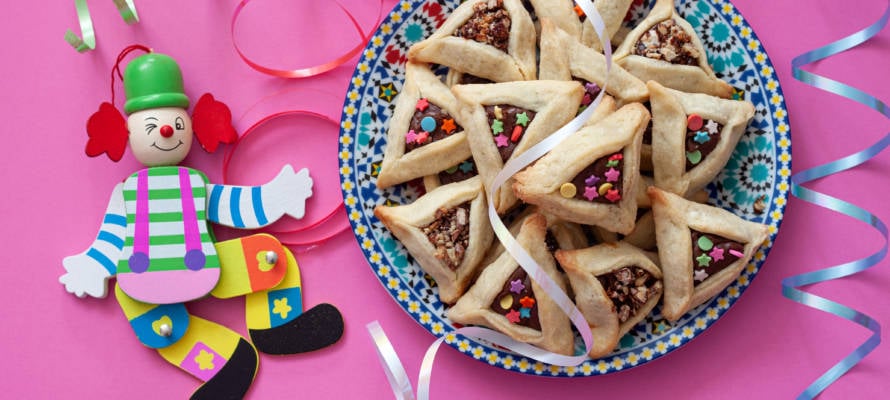This year, there are unusual complications regarding the timing of the festive Purim meal, since the holiday falls on a Friday.
By Rabbi Ari Enkin, Rabbinic Director, United with Israel
This year we find ourselves observing Purim on a Friday, and as such, there is much discussion as to when one should hold the seuda, the Purim Feast – one of the fundamental mitzvot (commandments) of the day.
As a general rule, one is not permitted to eat a large meal on Friday. This is in order to ensure that one has a hearty appetite for the Shabbat evening meal. In fact, there have been individuals in the past who would fast every Friday in order to build up a better appetite for the Shabbat dinner. For this reason, one should generally only eat light meals or snacks throughout the day on Friday.
Eating a meal of any size in the late afternoon is especially problematic. In fact, one should never eat a larger-than-usual meal on a Friday, not even early in the morning.
So, with this background, we need to discuss when to hold the Purim meal, since it is a large one and the holiday falls this year on Friday. What should we do?
On the specific issue regarding the timing of the Purim meal, the Code of Jewish Law is mysteriously silent. The Ashkenazi authorities, however, rule that when Purim falls on a Friday, the seuda is to be held in the morning, in order not to get too full before Shabbat. Most contemporary authorities concur with this view.
As such, it seems that one should hold the Friday Purim meal early in the day, preferably before noon. However, once one has begun the meal in the permissible “time zone,” he or she is permitted to extend the meal into the afternoon without worry. Indeed, those who conduct themselves in this manner are completely entitled to do so, even though they will likely have no appetite for the Shabbat meal.
Nevertheless, those who find themselves at a seuda on a Friday for a different reason, such as celebrating a brit (circumcision), should make an effort not to overeat in order to ensure an appetite for the Shabbat meal. One who, for whatever reason, is unable to begin the Purim meal early in the day should endeavor to eat less at the meal, especially with regard to the amount of bread, in order to leave room for the Shabbat meal.
There is, however, an alternative approach with regard to the timing of the Purim seuda, and this is to combine the Purim and Shabbat evening meals into one. According to this approach, one begins the Purim meal late Friday afternoon, after completing all of the Shabbat preparations. Then, shortly before sunset, one covers all the bread that is on the table, and the Kiddush is recited, thereby inaugurating Shabbat. After reciting Kiddush, one simply continues with the meal that has now become the Shabbat evening meal. The blessing upon wine is not recited during kiddush if it was already recited during the earlier part of the meal (what’s a Purim meal without wine?). So, too, the blessing upon bread is not recited again.
Nevertheless, a number of authorities oppose combining the Purim and Shabbat meals into one based on the halachic (Jewish legal) prohibition of “not bundling mitzvot together.” The is because doing so gives the problematic appearance that one is discharging both the Shabbat meal and the Purim meal with a single meal (i.e. bundling mitzvot together). There are additional logistical and halachic complications to doing so, such as when one should recite the Shabbat evening service.
Therefore, with regards to the Purim meal this year, here is what you should do (in order of preference): eat the meal in the morning (morning is defined as before midday), eat the meal after midday but as soon as possible, eat the meal before the 10th hour of the day, and, finally, combine the Purim and Shabbat meals into one (not recommended).
Whatever you do, have a happy Purim!
